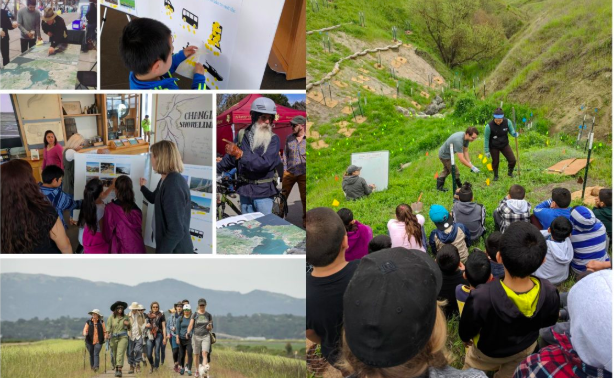The State Route 37 (SR37) Public Access Study is an outgrowth of the Grand Bayway Concept developed by the Common Ground Team as part of Resilient by Design. Funded through a grant from the California Department of Transportation (Caltrans), with matching funds from the Metropolitan Transportation Commission (MTC) and project management by the Bay Area Regional Collaborative (BARC), the project examines a full range of appropriate public access opportunities within a large ecology crossing four counties and sensitive habitats.
A working group including a cross-section of key stakeholders from the sub-region – including environmental stewards, public property owners, representatives from the underserved City of Vallejo – has been formed with the following goals: To develop a set of bike/e-bike, pedestrian and water recreation options that balance public access and protection of sensitive habitats; confirm trail design principles, guidelines, and routing alternatives to complete a continuous San Francisco Bay Trail Alignment between Novato and Vallejo; Identity opportunities to incorporate access to the Bay via the San Francisco Bay Area Water Trail; Consider opportunities to increase awareness and environmental education in the Baylands ; and deliver strategic near-term trail and access options, in coordination with the longer and short-term goals of the region. The group has organized a series of events including focus group meetings, “Pop-up” events such as a Bike Tour of Skaggs Island, meetings with state, regional and local agencies as well as community organizations over the past year.
In November 2019, the Exploratorium held an event with representatives from the State Coastal Conservancy, A. Philip Randolph Institute, South Bay Salt Pond, the Bay Area Conservation and Development Commission (BCDC) and others to discuss “Public Learning and Equitable Access During Climate Adaptation. You can listen to the event here.
A final recommendations report will be issued in the Spring of 2020, which will include recommendation on near-term “catalyst” projects with advanced renderings and identification of strategic partners and potential funding sources for next phase of work.Additionally, with Caltrans developing two SHOPP projects within the program area, which is the key program that funds highway improvements across the State of California, they have the opportunity to help put in motion keyt features of Governor Newsom’s Executive Order N-19-19, which specifically directs the State Transportation Agency to leverage “the more than $5 billion in annual state transportation spending for construction, operations, and maintenance to help reverse the trend of increased fuel consumption and reduce greenhouse gas emissions associated with the transportation sector”.

